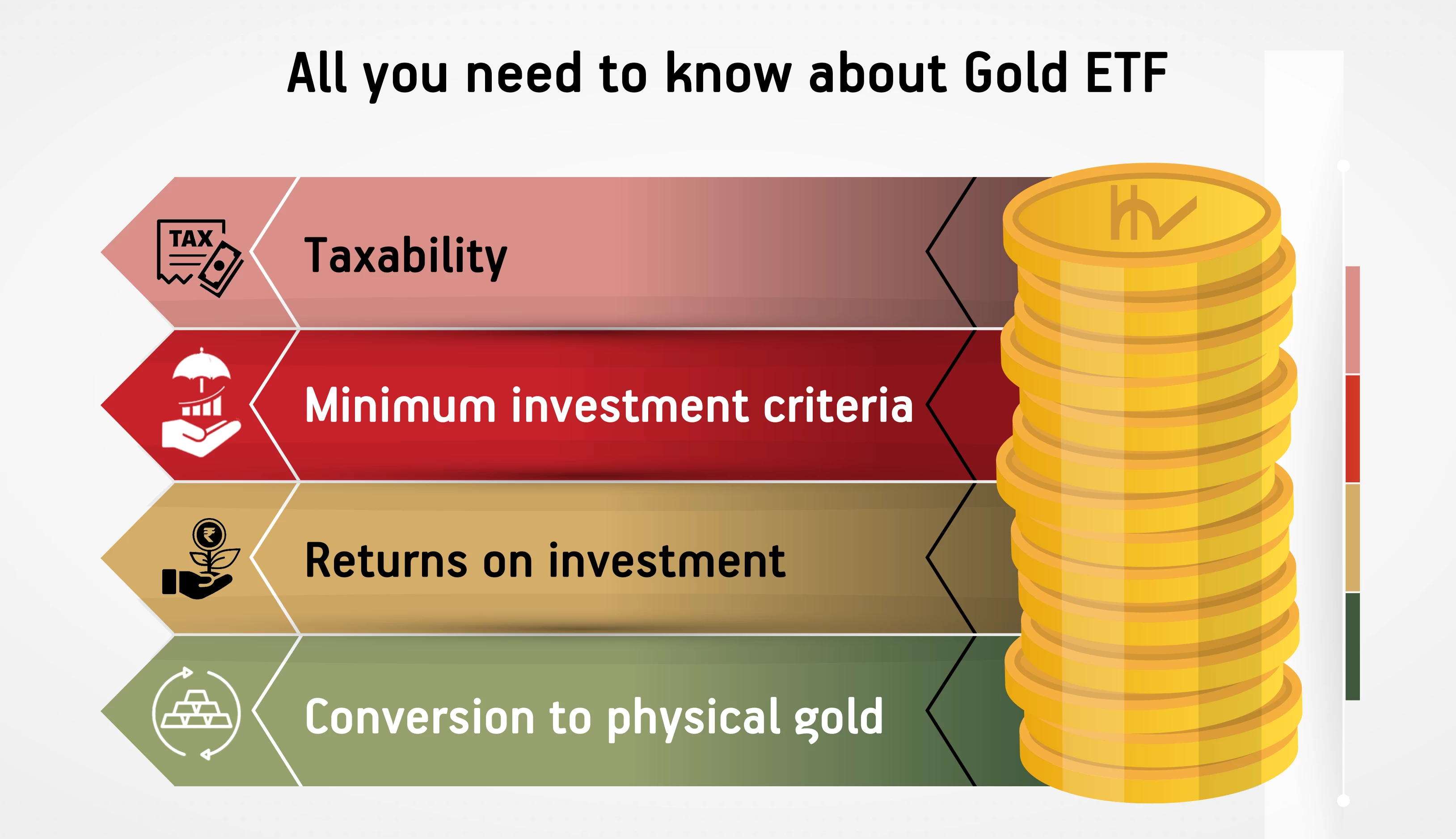-
Our Products
Our FundsFocus Funds
-
Self Care
Self-ServiceFind InformationWays To TransactPartner Solutions
-
Downloads
- Learnings
- About Us
-
More
-
Shareholders
-
Shareholders
-
Updates
-
-
SIP Calculators
- Back
-
Shareholders
All you need to know about Gold ETF

Sep 14, 2022
4 min
3 Rating
Gold has a special place in every Indian household, people still prefer investing in physical gold in the form of jewellery and coins. However, gradually, the digital form of holding gold is catching up, espe-cially with a tech-savvy audience. Let’s learn a little more about one such digital form of gold invest-ment, namely the Gold ETF.
What are Gold ETFs?
Gold Exchange Traded Funds are commodity-based mutual funds which invest in gold. Gold ETFs are traded on the stock exchange exactly like individual stocks. Gold ETFs are a representation of physical gold. If you were to buy Gold ETFs, the holding is representative of holding actual physical gold.
How are Gold ETFs returns computed?
The funds are directly invested in the yellow metal, thereby the fund tracks gold prices closely, there is a certain expense associated with an investment in Gold ETFs as in the case of other mutual funds/exchange-traded funds, the expense ratio of Gold ETFs is around 0.5% to 1%. Gold ETF returns are similar to that of physical gold after adjustment for the expense ratio.
What are the minimum investment criteria?
Although this depends on the prevailing prices per unit of gold, most of the fund houses, offer gold units at 0.01 gram in the spot market. This has made Gold ETF investments extremely affordable, an investor can slowly build exposure to the asset class over time.
Why should you consider investing in Gold ETFs?
Gold is traditionally considered an excellent hedge against inflation. Gold is also called a store of value. Gold, as an asset class, is subject to less volatility as compared to other asset classes such as equities. There are instances when gold and equity exhibit an inverse relationship. Hence, the addition of this asset class insulates the portfolio against inflationary times and possible steep corrections in equity markets.

Can Gold ETFs be converted to physical gold?
This option is available provided you have a minimum number of units which cumulate to 1 kg worth of gold. This is because the standard size of one gold bar is 1 kg. For gold ETFs with a minimum unit size of 0.01, you will have to accumulate ~1.15 lakh units and if the minimum unit size is 0.5, then the mini-mum number of units to avail of this benefit would be ~2000 units. You can approach the fund house directly and request them to liquidate your holding physical gold as per your requirement.
Taxability of Gold ETFs
The Gold ETFs held for over 3 years are taxed at 20% with indexation benefit, which adjusts the pur-chase for inflation, this turn brings down the tax liability considerably. Gold ETFs held for periods lower than 3 years are added back to your income and taxed at normal rates which can be as high as 30%.
Why is Gold ETF better than physical gold?
Firstly, Gold ETFs invest in gold with the optimal amount of purity, you are charged as per the prevail-ing rate of the gold net off the expense ratio. If you are buying gold jewellery then you will have to pay for making charges, the charges could differ from one jeweller to another. The extent of purity also remains questionable. You will also incur GST on the purchase of jewellery. Buying gold coins and bars is again tricky with many issuers not buying back these at the prevailing rates at a later date. You may be forced to sell it to another jeweller who may charge transactional expenses. Further, physical gold comes with the risk of theft. You may incur locker expenses to keep it safe.
Hope this brief note provides you with enough insight on Gold ETFs to empower you to make in-formed decisions.
Read about : What is Equity Mutual?
Mutual Fund investments are subject to market risks, read all scheme related documents carefully.





 1800-270-7000
1800-270-7000



